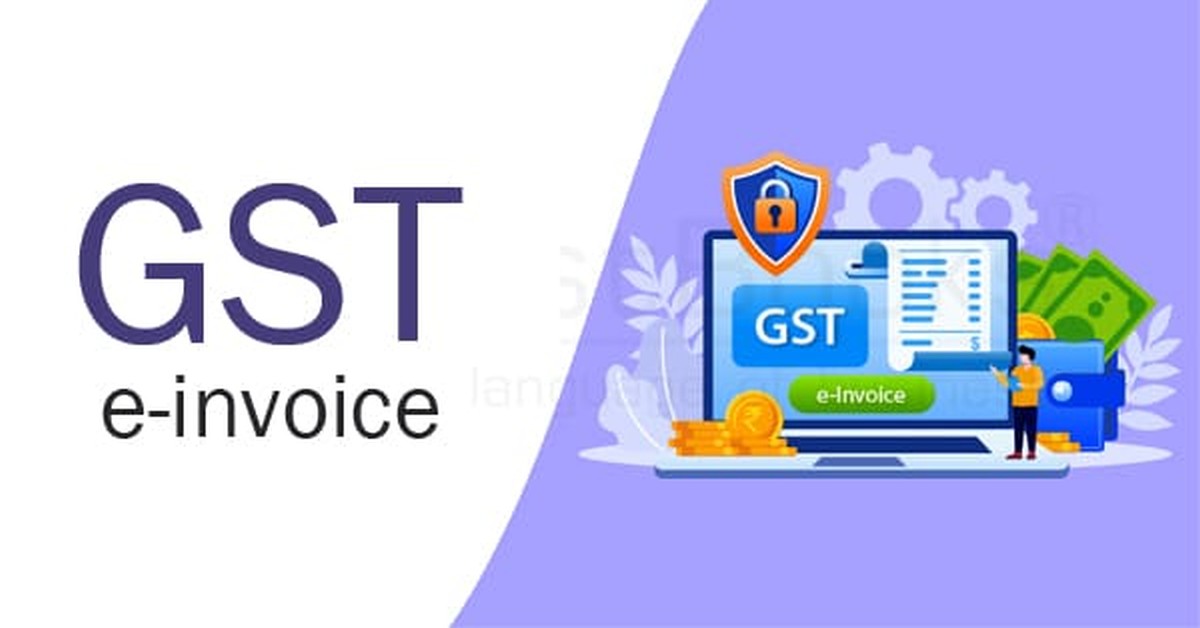1. Electronic Invoicing is an electronic authentication mechanism under GST.
2. Under the mechanism, all the B2B invoices generated by a business will have to be authenticated on the GSTN portal, electronically.
3. E-invoicing is not generation of invoices by a Government portal. Taxpayers will continue to create their GST invoices on their own Accounting/Billing/ERP Systems as per the e-invoice scheme. These invoices will then be reported to ‘Invoice Registration Portal (IRP)’. On such reporting, IRP will generate a unique ‘Invoice Reference Number (IRN)’, digitally sign it and return the e-invoice to the supplier. A GST e-invoice will be valid only with a valid IRN.
4. W.E.F 1/10/2020 Suppliers whose Turnover Exceeds 500 Crore in any of the F.Y from 2017- 18 onwards shall issue E-Invoice for B2B Transaction. The turnover limit for e-invoicing has undergone several changes. On January 1, 2021, it was lowered to Rs. 100 Cr. Subsequently, in April 2021, the limit was further reduced to Rs. 50 Cr, followed by additional reductions to Rs. 20 Cr and then Rs. 10 Cr. The latest update, as of May 10, 2023, sets the turnover limit for e-invoicing at Rs. 5 Cr, as per Notification No. 10/2023–Central Tax.

5. Furthermore, to manage these invoices, the Invoice Registration Portal (IRP) will issue a unique identification number for every invoice called Invoice Reference Number (IRN).
6. The following are exempted from the provisions of E-invoicing:
- An Insurer, Banking Company, or Financial Institution including NBFC
- Admission to the exhibition of Cinematograph Films in Multiplex Screens
- Goods Transport Agency (GTA)
- Passenger Transport Service
- SEZ Unit (**It is important to note here that only SEZ units and not SEZ developers are exempt from issuing e-invoices.)
7. If No E-Invoice is not Issued (where Applicable), Recipient is not eligible to claim ITC, as an invoice is not a valid invoice if it is not an E-Invoice.
8. Correction or modification of any e-invoice is not allowed. However, if any taxpayer wishes to modify the data/figures already mentioned in the e-invoice, then he/she shall cancel the same and generate a new e-invoice within 24 hours of its generation.
9. Any cancellation done after 24 hours of an E-invoice generation cannot be reported to the IRN portal. In such cases, the taxpayer will have to manually update/cancel the invoice on the GST portal before the returns are file.
Benefits of e-invoicing
Avoidance of Data Reconciliation and Mismatch Errors:
E-invoicing automates the invoicing process, reducing the likelihood of human errors associated with manual data entry. This helps in avoiding reconciliation issues and ensures the accuracy of financial data.
Real-time Tracking of E-invoices:
E-invoicing systems provide real-time visibility into the status of invoices. This means that organizations can track the progress of invoices throughout the invoicing lifecycle. This real-time tracking capability enhances transparency, reduces delays, and allows for better management of cash flow.
Auto-population of Data onto Tax Returns and E-way Bills:
E-invoicing systems often integrate with accounting and tax software. This integration enables automatic population of relevant data from e-invoices into tax returns and e-way bills. This automation not only saves time but also minimizes the risk of errors in tax-related documentation.
Online Availability of Transactions:
E-invoicing platforms store invoice data in a centralized and accessible location. This online availability allows for easy retrieval of transaction details at any time. It facilitates quick and efficient audits, as tax authorities or internal auditors can access the necessary information without sifting through physical documents.
Elimination of Data Mismatch:
The centralized storage of e-invoices contributes to the elimination of data mismatch issues. Since all relevant data is stored in a standardized format, discrepancies can be easily identified and resolved. This ensures consistency and accuracy in financial records.







 CAclubindia
CAclubindia
